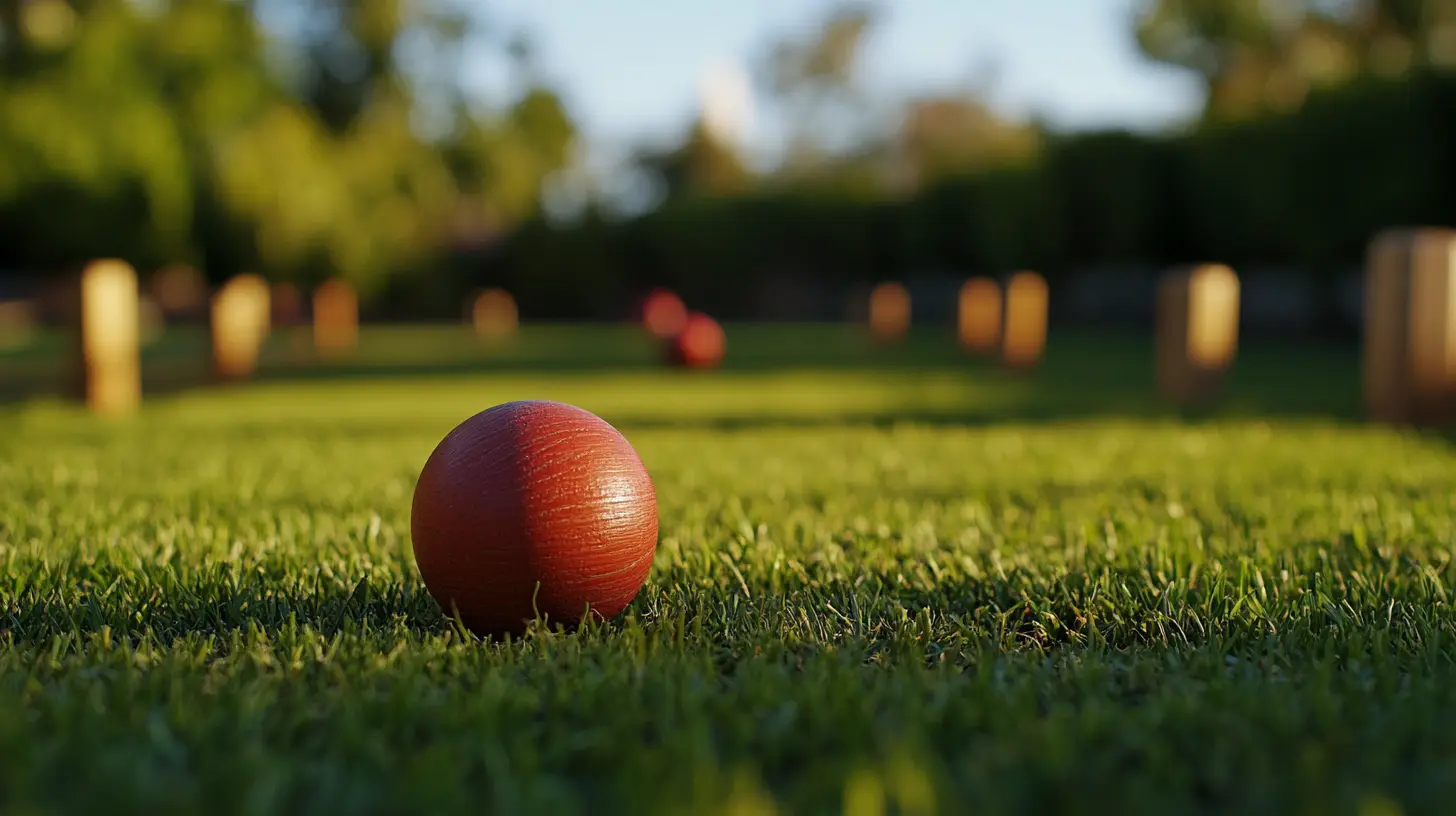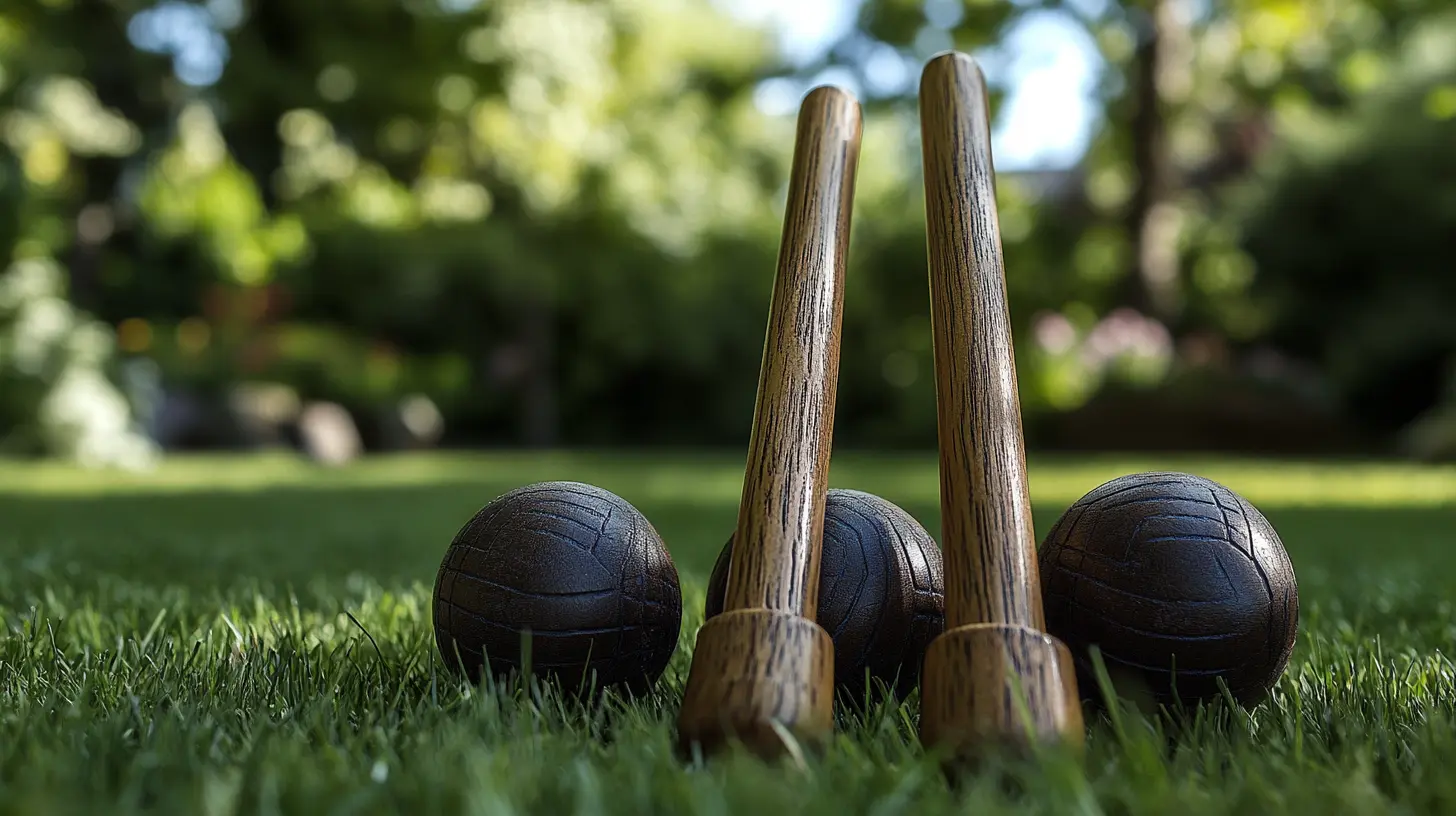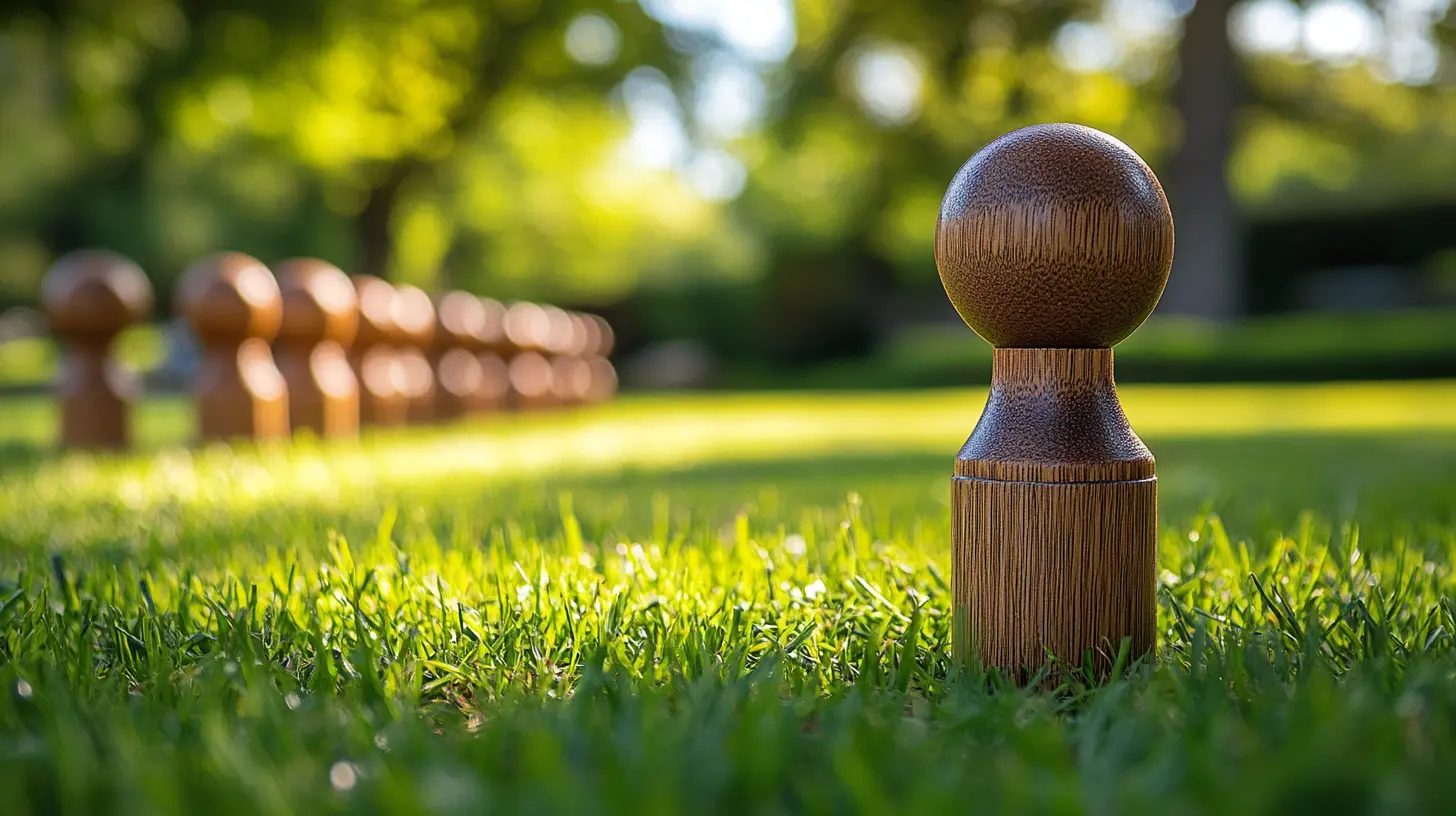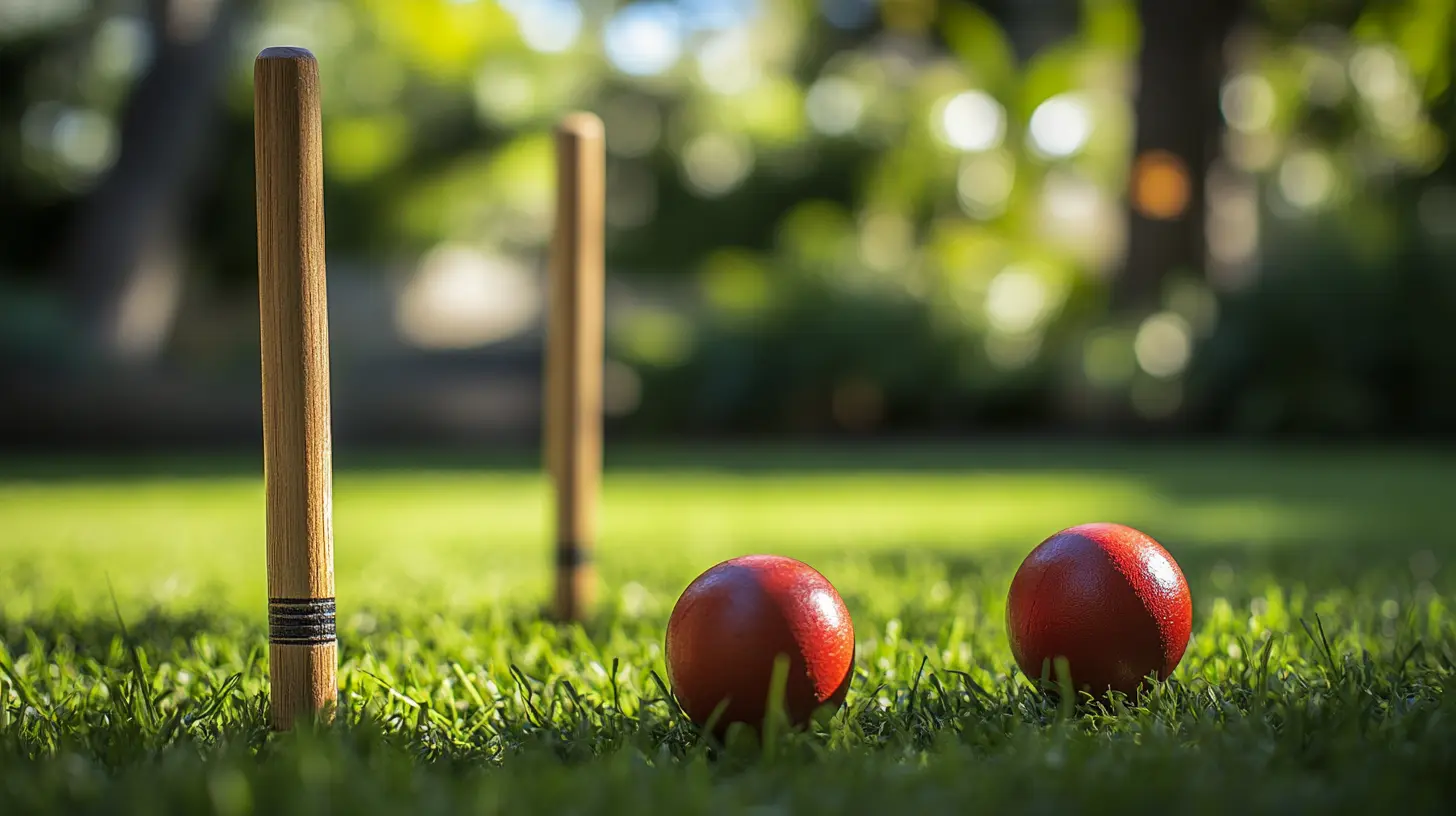Outdoor games have seen a sudden resurgence in popularity, and among the favoritest of the favorites for family or friend gatherings is the Yard Croquet Set. With an international clientele buying high-quality wooden sports equipment, it is necessary to understand the manufacturing standards around these products. Standards guarantee safety and durability and add to the overall fun of the game. This blog intends to elaborate on the fundamental manufacturing standards associated with a Yard Croquet Set to assist potential buyers in their choice of these yard favorites.
Pridefully, Zhangzhou Handsome Co., Ltd. stands at the top as a leader in the integrated production and sales of wooden sports equipment. With years of experience in producing everything from Yard Croquet Sets to many other premium products, we ensure that our products comply with international standards while maintaining high value for our customers. Global buyers can gain insight into the quality and craftsmanship that goes into making our products through an understanding of manufacturing standards, thereby allowing for a most enjoyable experience for players of all ages.

The choice of materials in the yard croquet sets manufacture greatly influences the durability, performance, and general beauty of the game. The main materials used to manufacture yard croquet sets are hardwood, plastic, and metal, with each having its own advantages and hence attracting different kinds of consumers. Hardwood, such as maple or oak, is chosen for strength and resilience. The wood gives a classical look and feel to the game, and its solid mallets convey energy to the balls while providing a substantially enhanced gaming experience. These woods are usually finished to protect them from the wear of elements, thus suitable for outdoor play. The weight and balance of mallets made from hardwood allow for superb control of gameplay, thus making the same a valued choice among the enthusiasts of croquet. On the other hand, plastic is gaining favor because it is light and repels changes in environment. Croquet balls and mallets made of plastic can take tons of punishment without hardly any wear, making them suitable for families and casual players. High-density polyethylene is the preferred material with manufacturers, giving the best performance, and variety of colors has its appeal for those who seek playful aesthetics. In most instances, metal is utilized in the manufacture of elements such as stakes and other hardware, adding greater stability and longevity to the set. Stainless steel or aluminum is the predominant choice, ensuring that these parts remain resistant to rust and withstand all outdoor rigors. These additional materials not only strengthen the set's structure but also integrate modern design flavor, appealing to contemporary buyers. As stakeholders consider what croquet set materials would suit them best, international buyers can narrow their choices according to various combinations of activities and aesthetics. These might range from cherished hardwoods to more pragmatic plastics, where each material provides certain advantages to the game.

Safety is paramount in a game of yard croquet for both manufacturers and players. Safety standards for yard croquet equipment should be understood globally by buyers who wish to ensure that their products conform to the international law make water. These standards ensure the safety of players from injuries while enhancing game quality.
One major consideration in safety standards is the material for manufacturing croquet sets. Non-toxic and good quality so that no injury is caused by breakage or splintering during playtime. It is also important to check the weight and size of mallets and balls so that players of all ages can operate them safely and comfortably. Manufacturers must ensure compliance with regulations set up by authorities in different countries for safety in use for their products in different surroundings.
Importantly, stringent testing protocols are essential for establishing that yard croquet sets are safe for use and reaching the consumer. Testing for durability, stability, and ease of use would minimize accidents in the field. When buying globally, one must ensure that manufacturers understand the importance of these safety standards and conform to testing procedures and quality checks. Buyers who purchase equipment in line with safety guidelines would be enhancing a safer and better croquet experience for all.

The international certification comes critical to yab croquet set buyers to ensure quality and safety. Standards and specifications are set by various organizations indicating that a manufacturer meets such in-house criteria, which makes identification of such products by consumers a lot easier. Certifications such as ISO (International Organization for Standardization) and ASTM (American Society for Testing and Materials) establish that the croquet sets underwent rigorous performance standards tests and adhered to delineated benchmarks.
Besides those, there also existed general quality certifications; however, safety certifications should also be taken into account by buyers, especially for material used as it will be crucial. For instance, certificates such as EN71 make sure that games and toys can be children safe and free of harmful materials. Such seals are not the only proof of the quality in a product but will also give parents peace of mind for income spenders on their kids' seeking activities.
Likewise, buyers now look for eco- friendly certifications for the increasing selling trend in the sustainable practice of the manufacturing process for the products. For example, FSC (Forest Stewardship Council) labels means that wood used for the croquet sets is sourced responsibly and thus, should be environmentally sustainable. Such information enables global buyers along the market to better identify possible purchase routes for more conscious decisions that lead them to happy and safe croquet experiences at all ages.

So there are lots of ways of making croquet sets, and in some cases, the buyers from these markets might benefit from understanding them. Different countries have different standards and methods. Some of these depend on local resources, artisanship, and regulations. While some manufacturers use modern machinery for precision, others may stress classic handcrafting for quality and durability.
By and large, in the US, e.g., mass production is king; therefore, croquet sets can be produced cheaply and safely. European artisans take another route: they may focus on limited production runs of custom sets to meet the finer tastes of the buyers. The characteristics of the materials used also have tremendous divergence: some may utilize sustainable timber sourced, while some may go for synthetic materials, which, in turn, would affect not just the cost of production but also the playability and attractiveness of the set.
Safety standards affect the actual making. In countries projected to be gaining more and more popularity for croquet-the Annapolis Cup events are among them-selling through the observed safety protocols preserves customer satisfaction of the more appreciative class. Knowing these manufacturing techniques-well and the regulatory framework thereunder-would help buyers make an informed purchase.
Croquet set manufacturing has come under increasing scrutiny with regard to sustainability. The trend is thus brought about by the combined influence of consumer response and regulatory pressure. Per a 2022 report from the Global Sustainable Furniture Council, almost 60% of consumers are ready to pay extra for environmentally sound products. Consequently, manufacturers have attempted to innovate solutions that sustain the quality expected of yard croquet sets while employing methods and materials having minimal harm to the environment.
The role of sustainability in manufacturing has multiple dimensions, such as materials sourcing and methods of production. Today, many companies may select sustainably harvested woods and recycled plastics, thus significantly shrinking the carbon footprint of croquet sets. Recently, for example, it has been noted that bamboo can contribute to reducing greenhouse gas emissions up to 70% when compared with that of conventional hardwood due to its fast growth and renewability. Besides being a resource-saving measure, this kind of production process will also help to increase production efficiency.
The cycle of manufacturing starts with sourcing materials and carries through to considering end-of-life possibilities. It has been suggested that the greatest burden of environmental impact- roughly 80%-is assigned during the design phase of the product's life. Thus many companies now look at recyclability when designing their croquet sets, making sure individual components can be easily disassembled and upcycled once their life cycle ends. This embrace of circular economy principles will also appeal to the growing proportion of environmentally conscious consumers, further underpinning the shift to the sustainable yard croquet set market.
International buyers must consider distinct regional compliance norms regarding product safety and quality when contemplating the manufacturing standards for yard croquet sets. Importing countries have established safety regulations on such goods for active human involvement in their use, like croquet sets, among others. Komar recommends that buyers familiarize themselves with such regulations ranging from material safety to design standards-considering all to meet consumer expectations and legal requirements.
For instance, some areas specify materials that should be durable for outside use. Compliance with these standards minimizes legal risks and, at the same time, gives greater attraction to consumers who care about their health. Besides, knowing the various regional compliance standards is crucial to securing a dependable supply chain. Global buyers who team up with manufacturers well versed in local regulations and certifications would also do well for themselves when it comes to a simpler procurement procedure wherein all products are compliant and safe for distribution to the market.
With the expansion of the leisure product markets, the criticalness of clarity on the manufacturing standards will grow. International trade fairs and exhibitions provide a good medium for buyers to meet suppliers, view product quality directly, and engage in discussions regarding compliance. Such a first-hand approach can assist buyers in deepening their understanding of local regulations that may have an impact on their sourcing decisions. In the swift environment, maintaining continuous information about and proactive engagement in compliance protocols will thus find a favorable avenue for market entry of the respective products in a highly competitive croquet market.
Instead, global buyers would need to take a comprehensive approach, looking beyond price solely, to be able to judge supplier reliability vis-a-vis croquet. Recent reports from the International Association of Croquet suggest that demand for high-quality yard croquet sets has increased up to 15 percent within a two-year period - an indication that suppliers must adhere to stringent manufacturing specifications while manufacture these products. Further, making sure that prospective suppliers meet recognized quality standards enhances product legitimacy in addition to customer satisfaction and loyalty.
Another principle of supplier reliability is the transparency of their operations. A study by the Global Manufacturing Index indicated that if a supplier offers a comprehensive description of the manufacturing process and quality control measures taken within the firm, he or she can expect a long-term client relationship. Furthermore, a report stated that 68% of industry leaders would prefer to work with suppliers that are recognized as highly ethical in sourcing and responsible for the environment. Hence, these aspects, when incorporated in supplier evaluation, can help companies to protect themselves against failure and non-compliance.
Supplier evaluating can also be aided in the end by technology. With supplier performance management systems, for instance, buyers would have a record of key performance indicators (KPIs) and access to real-time information on operations from suppliers. According to Supply Chain Management Review data, organizations assign these technologies to better their suppliers' performance and product quality by as much as 30 percent. Apart from making the procurement process easier, advanced evaluation methods would ensure that buyers align with suppliers committed toward innovation and quality when it comes to yard croquet set manufacturing.
In the yard croquet set line market, it is vital to know consumer insights that manufacturers can use as an appeal toward global buyers. Recent surveys conducted within the industry show that 65% of consumers think quality materials are the most important factor in their selection of croquet sets. The salient features affecting the choice to purchase croquet sets are high durability and resistance to wear and tear with the weather for outdoor games. This infers opportunities as sets which please the eye as well as withstand the rigors of outdoor play are fast gaining popularity.
Another aspect here is easy assembly and portability. AOG reports that 58% of consumers stated that they would want croquet sets that were lightweight and easy to assemble. This is particularly attractive to families and recreational users who may not want to spend hours setting up or carrying around heavy gear. As manufacturers try to create croquet set designs that come with lightweight carrying cases and some preassembled components, user experience is improved.
Price sensitivity is also very significant when it comes to buyer choices. According to a research study by Market Research Future, most consumers look for croquet sets priced between $50 to $100 to balance quality with pricing. As the market matures, it is likely that companies that communicate value focused on their goods transparently and then give it at a competitive price will take a larger portion of the global consumer base. They can subsequently put their knowledge of these consumer apps to convert into viable products that appeal and suit buyers across different regions. Thus expect to remain in the market.
Important international certifications for croquet sets include ISO (International Organization for Standardization) and ASTM (American Society for Testing and Materials), which indicate that the products have undergone rigorous testing and meet defined quality benchmarks.
Safety certifications, such as EN71, are important because they ensure that the materials used in manufacturing croquet sets are safe for children and free from harmful substances, providing peace of mind to buyers.
The FSC (Forest Stewardship Council) certification signifies that the wood used in croquet sets is sourced responsibly, promoting environmental sustainability and eco-friendly practices in manufacturing.
Manufacturing techniques for croquet sets vary globally, with some countries focusing on mass production for cost-effectiveness, while others, like those in Europe, may prioritize bespoke production emphasizing quality and craftsmanship.
The choice of materials in croquet set manufacturing is influenced by availability, sustainability practices, and cost considerations, with some manufacturers using sustainable wood and others opting for synthetic materials.
Safety standards impact the manufacturing process by ensuring that products meet the expectations of safety and quality, particularly in regions where croquet is gaining popularity and consumers are more discerning.
Buyers should be informed about international certifications to make conscious purchasing decisions that ensure quality, safety, and sustainability in the croquet sets they choose for themselves and their families.
Understanding manufacturing practices is significant because it helps buyers assess the quality, reliability, and overall playability of croquet sets, aiding in making informed purchasing decisions.
Consumer preferences for quality, safety, and sustainability significantly affect the croquet set market, prompting manufacturers to adopt international certifications and diverse manufacturing techniques to meet these demands.
Aesthetics play a crucial role in the choice of materials for croquet sets, as certain materials can enhance the visual appeal and overall experience of the game, influencing buyer preferences.

